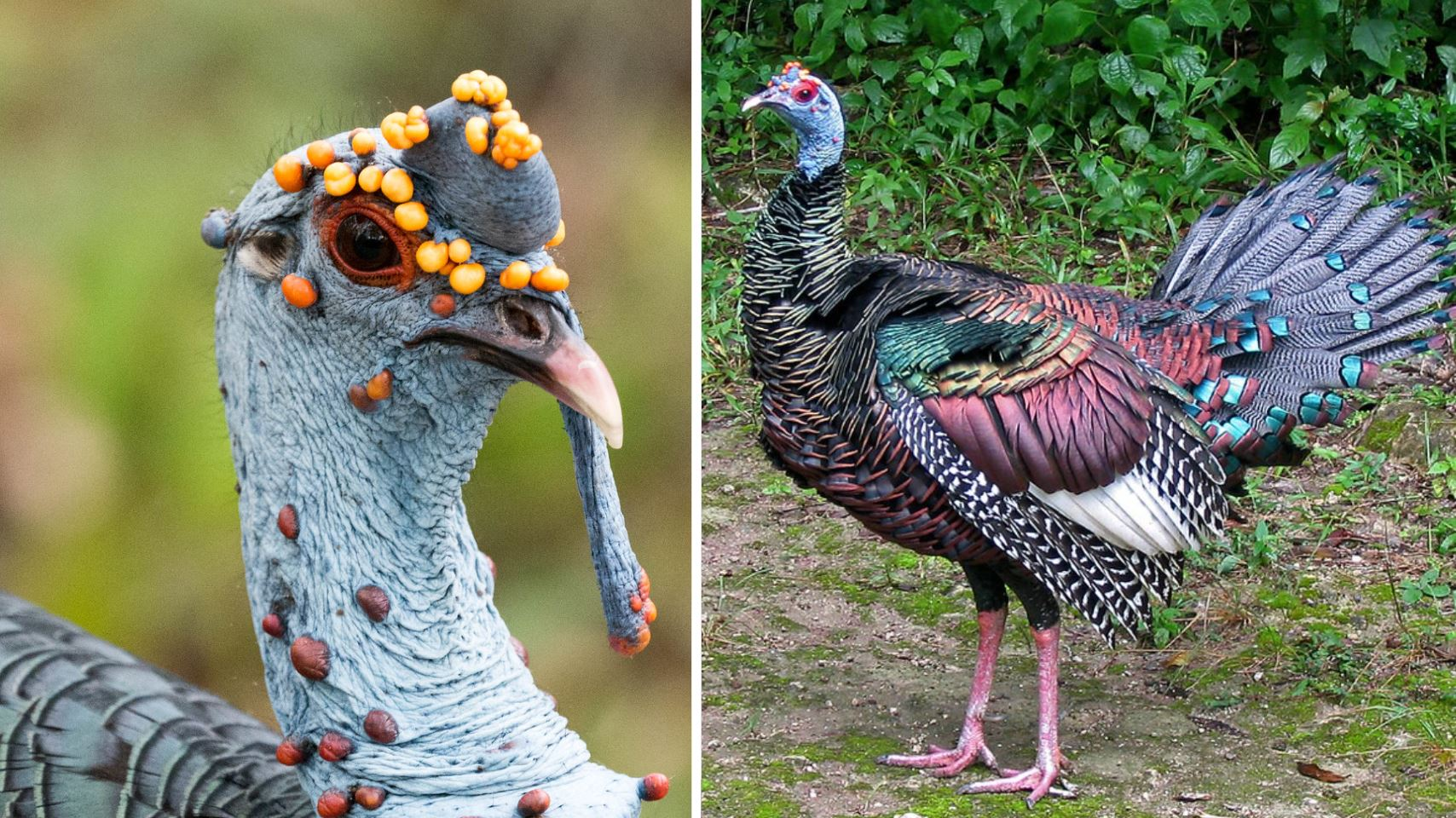¡Los ‘nódulos’ de cabeza naranja, el panel del ala de color cobre y las manchas oculares iridiscentes azules y doradas se combinan para crear un ave de caza grande, distintiva y espectacular!

Conoce el Pavo Ocelado
El pavo ocelado (Meleagris ocellata) es una especie de pavo que es el vistoso primo tropical de la única otra especie de pavo del mundo, el siempre familiar pájaro de acción de gracias. Ver a un macho pavoneándose hacer su baile de mírame es como ver un pavo salvaje a través de un filtro de caleidoscopio: la cabeza azul bebé está salpicada de nódulos rojos y naranjas. Las plumas metálicas del cuerpo brillan en colores que van del azul eléctrico al verde, y se vuelven más vívidas en las alas, también con bandas de color naranja bronceado y blanco. Su llamativa cola recuerda las famosas plumas del pavo real. (En español, esta ave a veces se llama pavo real, un término tanto para pavo real como para “pavo real”). Los machos tienen una corona azul carnosa cubierta de nódulos, similares a los del cuello, detrás de la redecilla. Durante la temporada de reproducción, esta corona se hincha y se vuelve más brillante y más pronunciada en su color amarillo anaranjado.
The body feathers of both male and female ocellated turkeys are iridescent bronze-green, with males more brightly colored than females.
Ocellated Turkeys are much smaller than any of the subspecies of North American Wild Turkey, with adult hens weighing in at about 8 pounds before laying eggs.
Unlike its northern relative, the Ocellated Turkey does not have big a range. Only existing in a 50,000 square mile area comprised of the Yucatán Peninsula range which includes the states of Quintana Roo, Campeche, and Yucatan, as well as parts of southern Tabasco and northeastern Chiapas.
This bird likes to hide, mostly unseen, amid the thick foliage despite its eye-popping plumage.
Ocellated turkeys tend to remain in small groups foraging under thick cover within forest and scrub-covered areas. But will venture into clearings and adjacent farm fields. Their diet consists mainly of seeds, berries, insects, and leaves.
Female Ocellated Turkeys lay 8-15 eggs in a well-concealed nest on the ground. She incubates the eggs for 28 days. The young are precocial and able to leave the nest after one night. They then follow their mother until they reach young adulthood when they begin to range though often re-grouping to roost. The voice is similar to the northern species too, the male making the “Gobbling” sound during the breeding season, while the female bird makes a “clucking” sound.
Unfortunately, large-scale timbering operations, followed by traditional slash-and-burn agriculture in Central America, threatens the habitat of the ocellated turkey. The rapid rate of this destruction is a major threat to the future of this spectacular bird.
YOU CAN WATCH THIS TURKEY RIGHT HERE IN THE VIDEO BELOW: